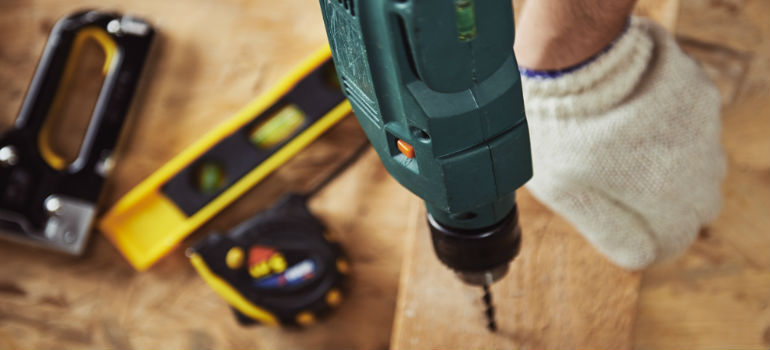
Drying racks for laundry are often used in low-budget households or simply in households that prefer not to waste electricity on clothing dryers. There is an estimate that about 12% of the average household energy consumption comes from the dryer, and many people find this figure crazy.
Why hog all of this energy when you can just hang your clothes outside and let the air and the sun do the same job for free?
Drying racks aren’t hard to find in stores, but they’re also not hard to build. If you have the tools, materials, and some spare time, here is how to make your own drying rack for clothes.
Table of Contents
What You Need
- An electric saw;
- A drill;
- Material – cedar;
- 8 wooden dowels;
- Hinges;
- Spray paint;
- A leather strap.
Check also:
These materials are enough to make a foldable wooden clothing rack. Of course, you’re not limited to the materials above. There are a lot of handymen who also prefer to use PVC pipes because of their lightweight.
How to Make Your Own Drying Rack for Clothes
- Use the electric saw to cut the cedar into 4 identical pieces.
- Drill four holes on two of them in order to fit the wooden dowels.
- Glue the four boards together. Make sure that the two drilled boards are facing each other.
- Cut the dowels at the right length and glue them into the holes.
- Repeat the same process to form an identical frame with bars.
- Spray both of your finished works with paint. Make sure to do it outside to avoid inhaling any toxic fumes. Leave them to dry for a while. If the sun is up, it won’t take too long.
- Clamp the two frames together at the top.
- Install the hinges.
- Glue the leather strap in the base of the two frames to prevent them from opening up too wide and causing the whole structure to collapse.
Need a Handyman?
Enter your postcode to view our rates and availability in your area.
For questions about the services we offer visit our main site or you can always call us at 020 3404 4045
Or… Just Recycle
Of course, there is always the possibility to just re-purpose something old. Instead of working with tools and materials, why not look around and find something you haven’t used in ages?
Something like a ladder
As unexpected as it may sound, ladders can provide a lot of space for drying clothes. Just place it horizontally, strap it with a sturdy rope, and hang the ladder on the most comfortable spot. You can even let your imagination run wild and decorate it with paint and stickers.
A leftover baby crib
If your kids aren’t babies anymore and their old crib is no longer useful, you can always disassemble it and use the barred frame the same way you would use the ladder. In some cases, there isn’t even a need to hang it anywhere – it’s enough to just place it across any two surfaces like a bridge.
A pulley-controlled drying rack
This one takes a bit more work to do. If you have a pulley lying around, then you can put it to good use. Install the mechanism on the ceiling and, with a wooden frame in hand and a bit of rope work, you will have a pulley-controlled drying rack that goes up and down.
On-the-door drying rack
With a drill and a few nuts and bolts, you can install a fully functional retractable drying rack on any door in your home. This way, not only will you save electricity, but you’ll also free up extra space. Once again, you don’t have to build it from scratch – an old crib would do just fine.
There is no need to waste electricity on something that’s already free. With a little bit of imagination, you can make clothes drying functional, money-saving, and even fun. For more ideas on how to save electricity, read Fantastic Handyman’s articles on power saving.
Image Source: Stasique/shutterstock.com




Leave a Reply